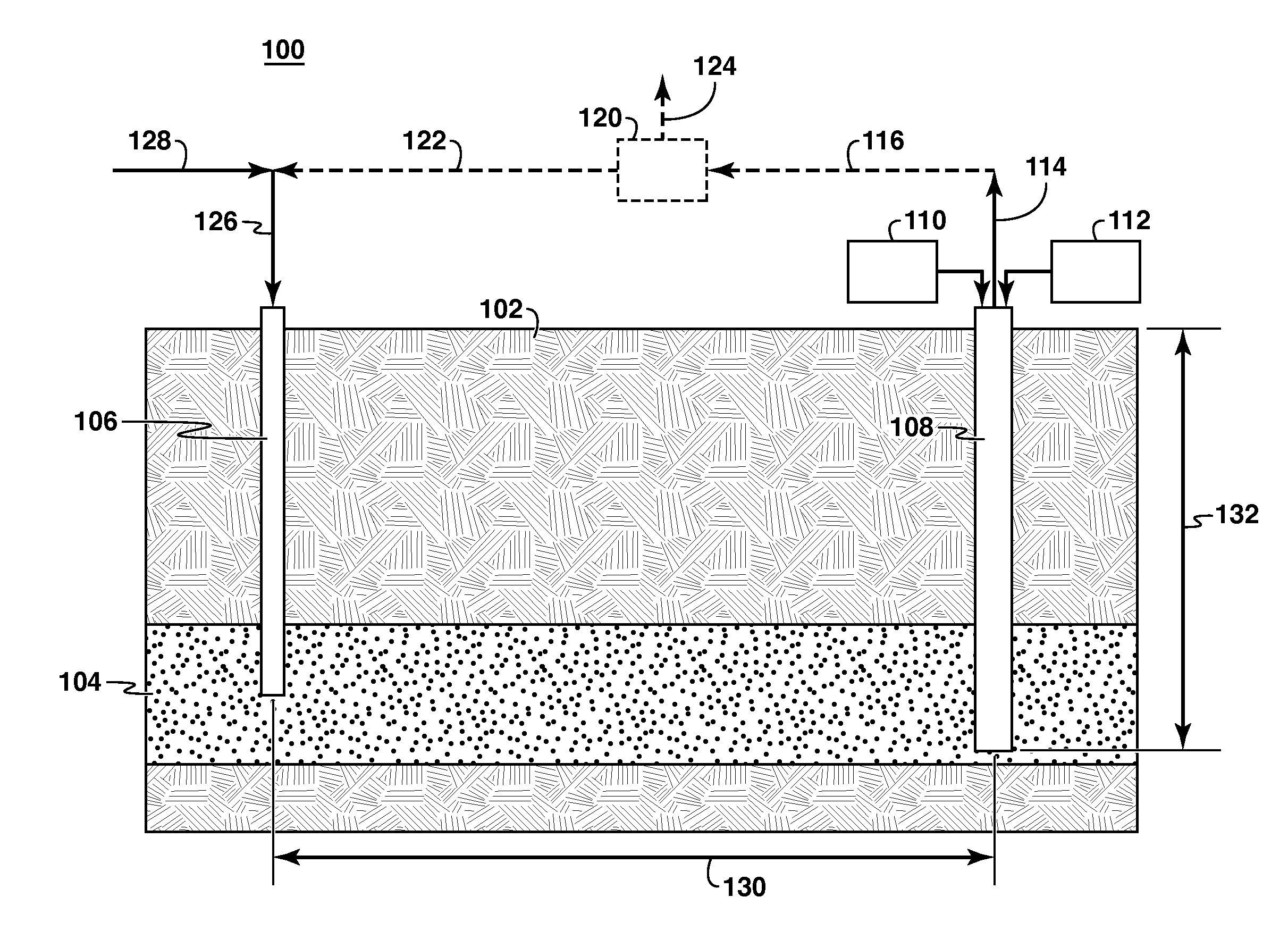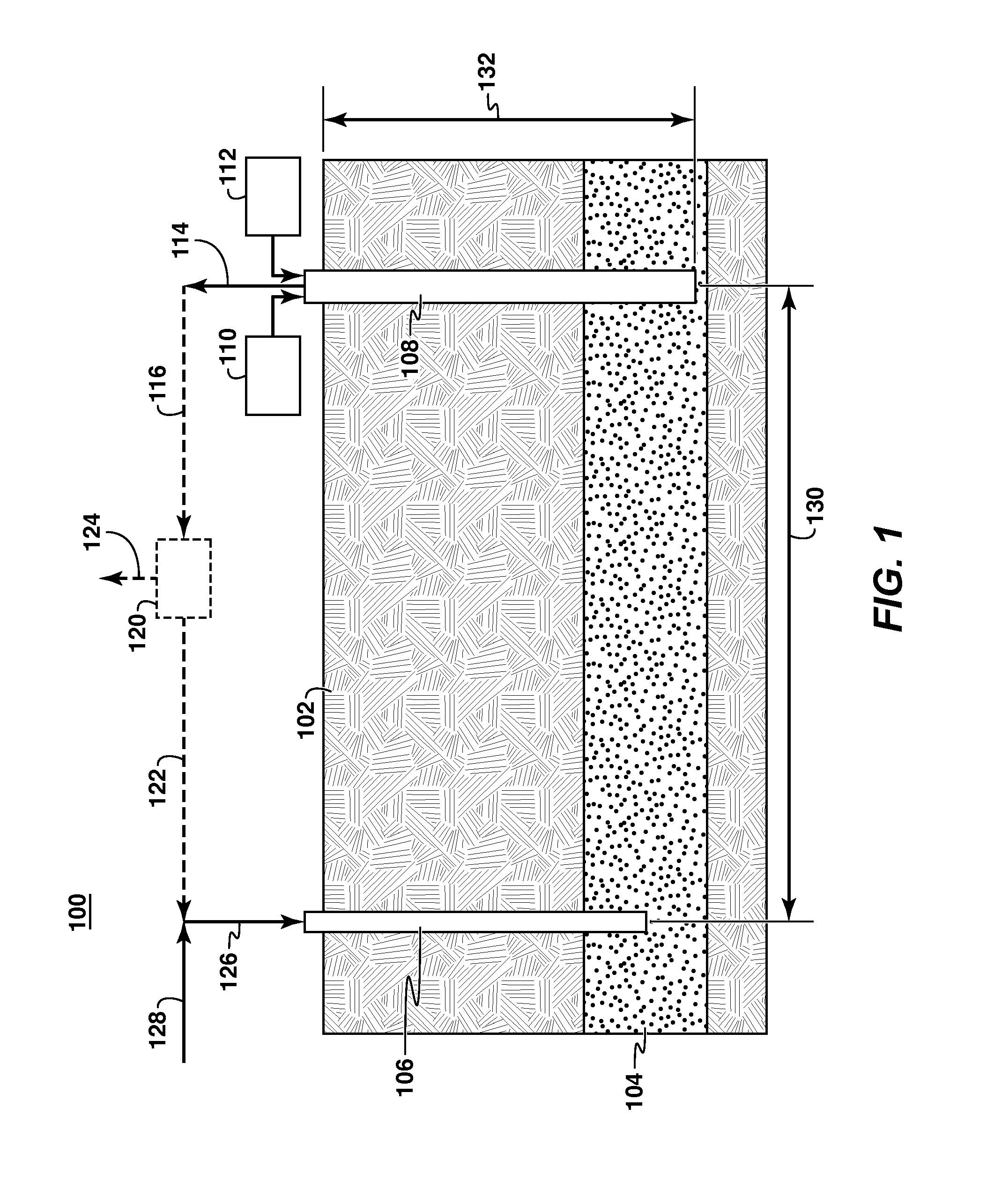Artificial Lift Modeling Methods and Systems
- Summary
- Abstract
- Description
- Claims
- Application Information
AI Technical Summary
Benefits of technology
Problems solved by technology
Method used
Image
Examples
examples
[0093]The processes, models, and systems described above can be used for a variety of purposes, including designing a slurry lift system. In one aspect, the numerical model can predict producer well performance for various physical parameters such as depth of the producer pipe inlet h, a flow rate of the jet pump, horizontal pressure gradient (∂p / ∂r), in situ slurry concentration cin, a configuration of the jet pump, a distance between an injection well and the producer pipe inlet, an inner diameter of the producer pipe, a flow rate of the fluid lift apparatus, a configuration of the fluid lift apparatus, and combinations of these and other physical parameters.
[0094]For this example, it is helpful to refer to FIGS. 4A-4B. In particular, the horizontal pressure gradient (∂p / ∂d) was set by specifying a pressure of zero at the outlet of the producer pipe 414 and setting the vertical inlet pressure profile 412 as:
pin(x)≅R∂p∂r+cinΔρgx(18)
[0095]In this example, the incoming slurry concent...
PUM
 Login to View More
Login to View More Abstract
Description
Claims
Application Information
 Login to View More
Login to View More - R&D
- Intellectual Property
- Life Sciences
- Materials
- Tech Scout
- Unparalleled Data Quality
- Higher Quality Content
- 60% Fewer Hallucinations
Browse by: Latest US Patents, China's latest patents, Technical Efficacy Thesaurus, Application Domain, Technology Topic, Popular Technical Reports.
© 2025 PatSnap. All rights reserved.Legal|Privacy policy|Modern Slavery Act Transparency Statement|Sitemap|About US| Contact US: help@patsnap.com



